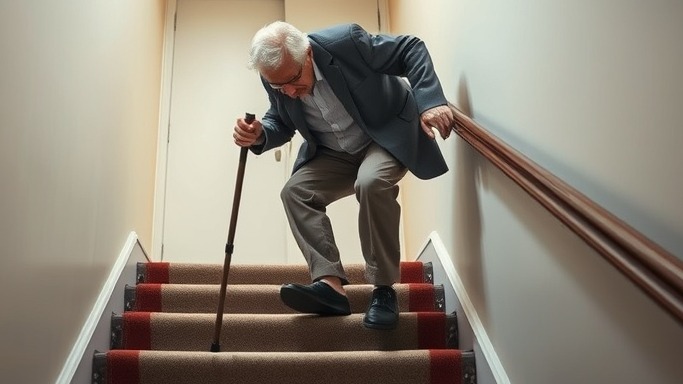
Understanding the Hidden Risks of Stairs for Seniors
Every year, the hidden dangers of stairs result in countless injuries among older adults. A 2017 study, based on data from the National Electronic Injury Surveillance System (NEISS), confirmed that stair-related falls are a significant health concern, especially for seniors. With over 1 million people treated annually for such injuries, it's crucial for families to recognize the dangers that stairs present in their loved ones’ lives.
Why Are Seniors Particularly Vulnerable?
As our loved ones age, their physical abilities can decline, which makes navigating stairs increasingly risky. Factors such as decreased mobility, balance issues, and impaired vision compound the inherent dangers of stairs. Alarmingly, 30.8% of emergency room visits due to stair-related incidents involve individuals aged 60 and older, underscoring the need for heightened awareness and preventive measures.
The Importance of Awareness and Prevention
For adult children caring for aging parents, being aware of these risks can provide a support system that fosters safety. Utilizing simple modifications, such as securing loose carpets and ensuring adequate lighting can significantly reduce the risk of falls. However, these may not always be enough.
Common Injuries Associated with Falls
According to Blazewick et al. (2017), the most common injuries sustained from falling down stairs include sprains, strains, and fractures. Lower extremities and head injuries are the most frequently affected areas. Understanding these injuries not only highlights the urgency of prevention but also prepares caregivers to respond effectively in the event of an accident.
A Stairlift as a Lifesaving Solution
Given the high injury rates, many families are considering the installation of stairlifts. These devices can be a game changer, providing seniors with the independence to navigate their homes safely. Not only do they minimize the risks associated with stair use, but they also bolster the confidence of aging parents, knowing they can access different levels of their homes without fear.
Inspiring Stories from Families Who've Made the Shift
Many families that have installed stairlifts report a significant increase in overall safety and peace of mind. For instance, the Peterson family shared that after their parents installed a stairlift, family gatherings felt less stressful and more enjoyable, allowing everyone to connect without the worry of potential falls.
Effective Steps to Ensure Safety
As adult children, there are numerous actionable steps to enhance the safety of aging parents. Emphasizing changes in the home environment, such as installing handrails and adding slip-resistant flooring, can create a more accessible living space. In scenarios where mobility remains a concern, considering a stairlift is a proactive approach that can save lives.
Fostering Communication and Understanding
It's vital for families to maintain an open dialogue about aging challenges, including the risks associated with stairs. Encourage your loved ones to voice their concerns and fears about navigating their homes, creating a supportive atmosphere where everyone feels heard and valued. This communication can facilitate decision-making around safety enhancements.
Final Thoughts on Stair Safety
Recognizing the dangers associated with stairs is the first step to ensuring the well-being of our aging loved ones. By being proactive about safety measures, whether that’s through simple home modifications or installing a stairlift, we can drastically reduce the risks of falls and injuries. It’s all about fostering an environment that promotes safety, independence, and confidence in our seniors.
Before taking any action, assess the unique needs of your loved ones and consider how a stairlift might enhance their quality of life. Taking these steps can significantly pay off in your family's long-term safety and peace of mind.
 Add Row
Add Row  Add
Add 




Write A Comment